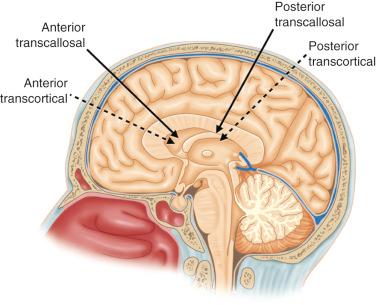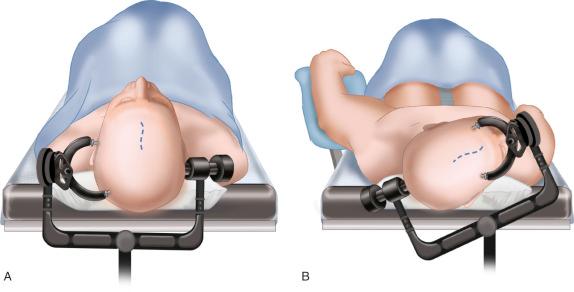Physical Address
304 North Cardinal St.
Dorchester Center, MA 02124
The transcallosal approach allows midline exposure of the anterior two-thirds of the third ventricle.
Preoperatively, in addition to standard MR imaging, venography is often helpful to assess the pattern of cortical venous drainage in order to help determine the side of the craniotomy.
When venous drainage permits and when the pathology is appropriate, an approach on the non-dominant side is preferred.
Preoperative neuropsychological evaluation is recommended in those patients with preoperative symptoms of cognitive impairment (e.g. memory deficits), owing to potential risk of injury to the fornices during the approach.
Lesions of the anterior portion of the lateral ventricle, thalamus/basal ganglia and third ventricle.
Contraindicated in patients with “crossed dominance” where the hemisphere controlling the dominant hand is contralateral to the hemisphere responsible for speech — such patients are at risk for a “disconnection syndrome” and patients may develop writing and speech deficits postoperatively (particularly with larger or posteriorly positioned callosal incisions).
This approach provides limited access to the anterior part of the frontal horn, posterior trigone or temporal horn. The transcortical approach is a safe alternative for those lesions ( Figure 14.1 ).

Patient is positioned in either the supine or lateral decubitus position. In supine, the head can be turned approximately 45° contralateral ( Figure 14.2 ). This allows for the ipsilateral hemisphere to fall away from the falx with gravity in addition to allowing the surgeon to work with their hands side by side versus on top of each other. With good positioning, the falx acts as a natural retractor.

The disadvantage of lateral positioning compared with supine positioning is an increased distortion of the midline anatomy caused by gravity. This can jeopardize correct midline orientation, which is essential in this surgery.
Become a Clinical Tree membership for Full access and enjoy Unlimited articles
If you are a member. Log in here